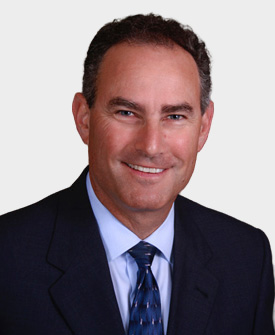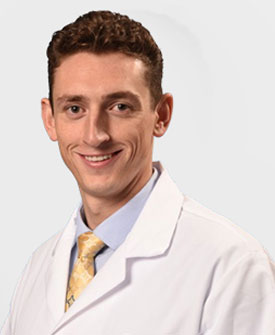Hip Anatomy and Conditions
The hip is a ball and socket joint made of the head of the thigh bone (femur), and the pelvis. The hip joint is the largest weight- bearing joint in the body and is prone to various types of injuries.
Hip joints can be compromised by:
- Trauma, fracture and dislocation – Auto accidents and falls can break a hip bone or dislocate the head of the thigh bone. People over the age of 65 commonly experience a broken hip. It affects both men and women, and is especially common in women with osteoporosis due to weakened bones. Even minor falls can be cause for hip fractures.
- Congenital and developmental conditions – Misaligned bones can rub together and damage the joint, cause joint pain, and decrease mobility. If not repaired, it can lead to hip arthritis. It affects all age groups.
- Hip Bursitis – Swelling and inflammation of the bursa that lubricates the joint, reduces friction, and provides cushioning during movement. Walking can aggravate the condition.
- Labral tears- The labrum is a ring of cartilage that lines the hip socket. It functions as a shock absorber, and distributes pressure evenly. Tears can be partial or total. Tears are often caused by repetitive use of the hip or trauma. In aging, the hip joint suffers wear and tear that can cause labral tears.
- Arthritis – Inflammatory arthritis causes hip cartilage to wear away at the end of bone surfaces. When the hip bones meet bone on bone, without cushioning, it is very painful and causes degenerative changes.
Non-Invasive Hip Pain Treatment
- Rest
- Limit activities
- Anti-inflammatory medications
- Steroid and analgesic hip injections
When pain is not managed with these approaches, arthroscopic hip surgery may be recommended.
Types of Hip Surgery
Hip Arthroscopy
Arthroscopy is a minimally invasive procedure to diagnose and treat symptomatic hip disease including inflammatory arthritis, hip pain, congenital disorders, and to fix any injuries and impingements. The goal is to regain mobility and stability, followed by strength and endurance.
Conditions that can be treated with arthroscopy:
- Femoro-acetabluar Impingement(FAI) – FAI is the most common reason for hip arthroscopy. FAI impingement means the head of the femur is unable to move through its full range of motion in the socket. It is due to excess bone that forms in either the ball or socket, resulting in damage to the joint.
- Repair tears in the hip cartilage (labrum).
- Bone chips or torn cartilage in the hip joint can be removed (debrided) to improve pain and range of motion.
- Remove bone spurs
- Treat hip ligaments damaged by dislocations
- Evaluate and manage hip joint infections
- Treat inflammation of the hip joint (synovitis)
Hip arthroscopy is a challenging procedure because of all the vital structures that must be avoided. Success depends on strict diagnostic criteria and patient selection. It is safe and effective. Recovery can take up to 2 months with rehabilitation and pain management. Complications are rare, but there is a slight risk of blood clots, nerve damage, and failure to relieve pain.
Benefits include:
- Smaller incisions
- Minimal soft tissue damage
- Lower infection rate
- Less scarring
- Earlier mobilization
- And can be done on as an outpatient procedure
Traditional (Open) Hip Surgery
This approach requires a single, long incision to view the joint. In some cases, muscles and tendons are cut or removed. There are greater risks involved in open surgery.
- Total Hip Replacement – the damaged parts of the hip are removed and replaced with metal, ceramic or plastic implants. This is an option when the joint is so damaged that it causes constant pain and significantly interferes with daily function.
- Total Joint Resurfacing – this is an option to avoid hip replacement for osteoarthritis, post- trauma arthritis and other conditions. This surgery repairs the damaged head of the thigh bone with a metal implant.
- Osteotomy – this major surgery removes damaged parts of the hip and the joint is repositioned to correct a deformity and improve alignment or function.
The exceptionally talented, compassionate surgeons at Orthopedic Specialists of North County are available to help. We see patients from Greater San Diego, Oceanside, Vista, San Marcos, Escondido, Carlsbad, and Solana Beach, California.




